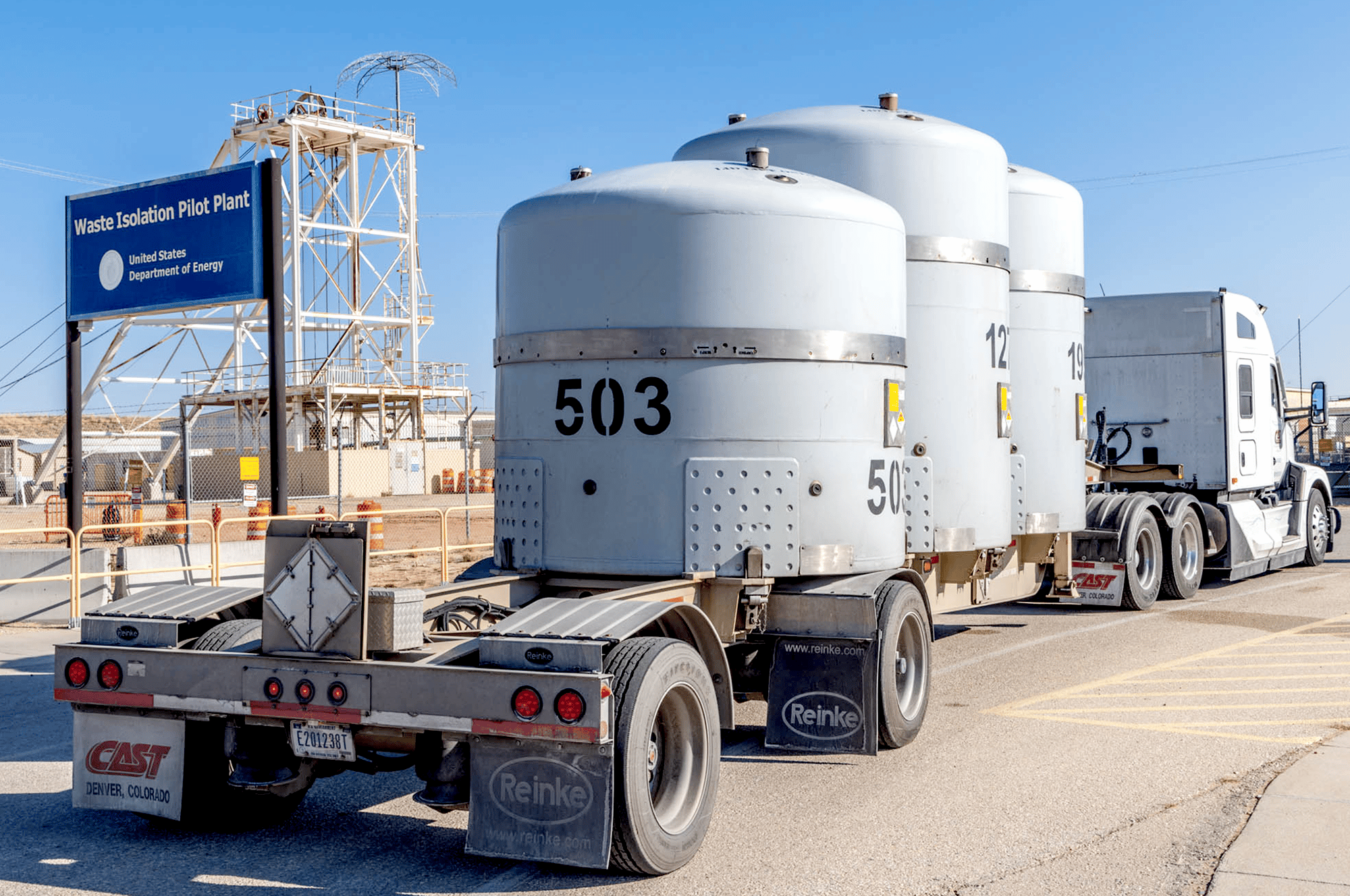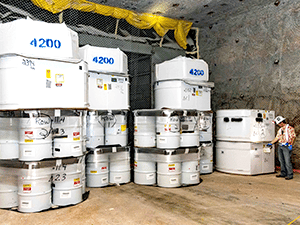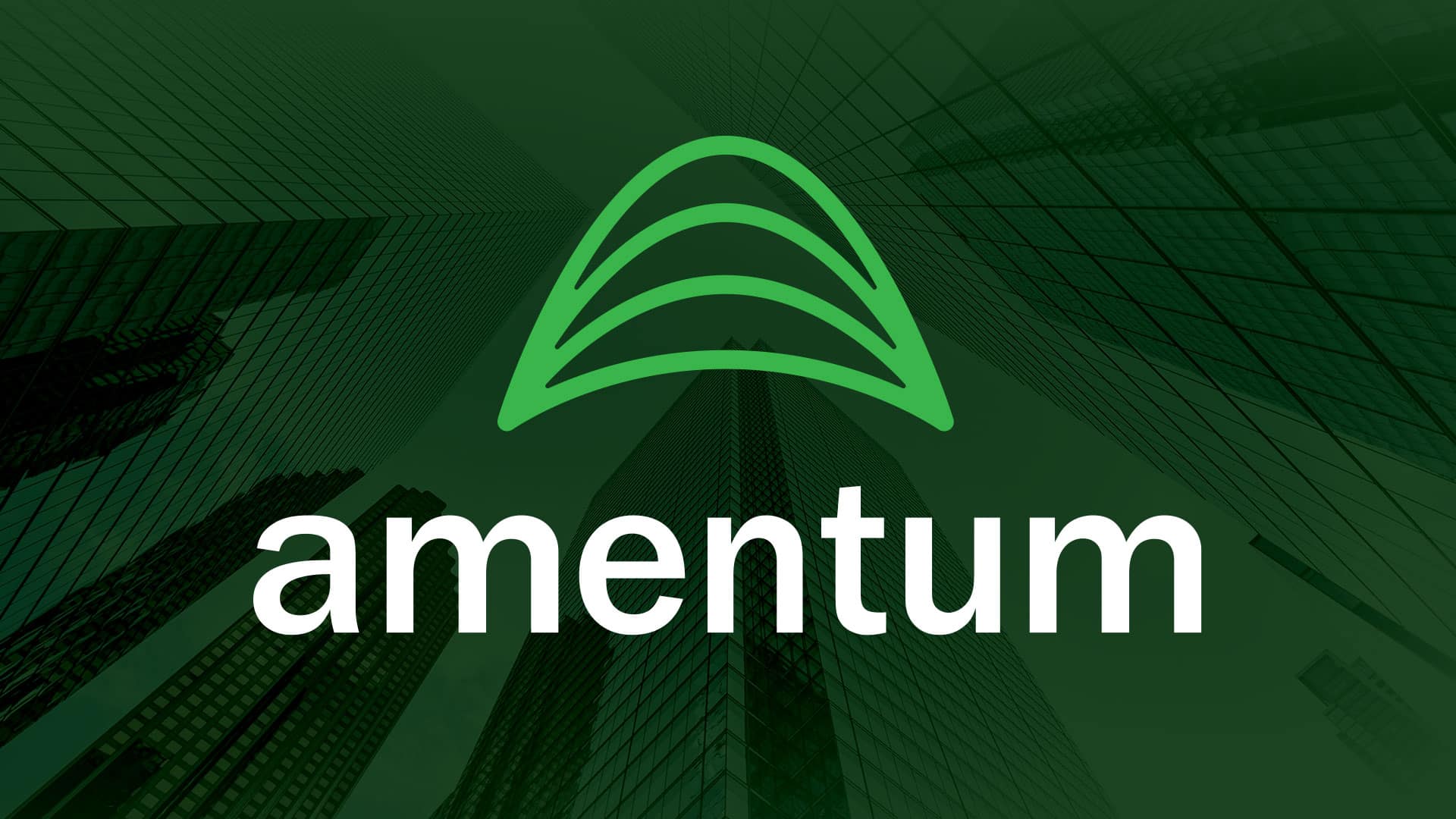Amentum-led WIPP Team Ramps up Shipping Frequency

The Amentum-led project team at the U.S. Department of Energy’s Waste Isolation Pilot Plant (WIPP) accomplished a major milestone by increasing radioactive waste shipments late last year.
Limiting operations due to a radiological incident in 2014, the transuranic nuclear waste repository at long last has moved into a new disposal area that makes emplacement safer, less complicated and more efficient.
The disposal area, known as Panel 8, consists of seven huge rooms that are 33 feet wide, 16 feet high and over 300 feet long, about the length of a football field with the end zones.
 WIPP waste handling crews celebrated October 20 when the final container of waste was emplaced in problematic Panel 7, where a ruptured drum led to a radiological contamination event in 2014. The event shut down the repository for three years before waste emplacement resumed in 2017.
WIPP waste handling crews celebrated October 20 when the final container of waste was emplaced in problematic Panel 7, where a ruptured drum led to a radiological contamination event in 2014. The event shut down the repository for three years before waste emplacement resumed in 2017.
When emplacement resumed in Panel 7, workers were required to wear respirators and anti-contamination suits, and handling waste involved a handoff from the “clean” side to the “contaminated” side of Panel 7 using push-pull devices on the forklifts.
In November , crews emplaced the first container of waste in the new Panel 8. It was a new day for the Amentum-led workforce and the Department of Energy. Emplacing waste in the non-contaminated panel now requires only one waste handling and radiological control crew, not two. Also gone are the respirators and anti-c suits. Now, instead of a forklift handoff at the entrance to the panel, a transporter drives all the way into the emplacement room before the forklift takes the payload and fits it into the stack of containers at the waste face.
 “The return to normal emplacement activities has allowed us to increase waste handling efficiencies, said Sean Dunagan, president of Amentum-led Nuclear Waste Partnership, the management and operations contractor that runs WIPP for the Department of Energy. “Crews recently achieved over a 50 percent increase in our downloading capacity. This has led to an increased WIPP capacity in accepting shipments and accelerate generator site cleanup.”
“The return to normal emplacement activities has allowed us to increase waste handling efficiencies, said Sean Dunagan, president of Amentum-led Nuclear Waste Partnership, the management and operations contractor that runs WIPP for the Department of Energy. “Crews recently achieved over a 50 percent increase in our downloading capacity. This has led to an increased WIPP capacity in accepting shipments and accelerate generator site cleanup.”
For example, prior to the pre-2014 events, WIPP was receiving up to 20 shipments per week. Through Covid and while still in Panel 7, shipments dipped to an average of five per week. Now in Panel 8, crews received 19 shipments the week of Dec. 19, followed by 15 the following week. In January, rates are expected to average about 14 shipments per week.
“It is our goal to continue steady, safe and compliant operations so we can return consistently to those levels in the very near future,” Dunagan said.
WIPP receives transuranic waste from generator sites via the Transuranic Package Transporter Model 2 (TRUPACT-II) and HalfPACT.
The TRUPACT-II can hold up to 14 55-gallon waste drums, two standard waste boxes (63 cubic feet capacity each), or one 10-drum overpack (a container designed to provide additional protection for older, deteriorating drums).
A shipment consists of three TRUPACTs or a TRUPACT/HalfPACT mix. Once TRUPACTs are opened and the payloads removed, two payloads are placed on a pallet and sent 2,150 feet underground to the WIPP repository.
The HalfPACT, as its name implies, is half the size of a TRUPACT-II and is designed to carry heavier loads.

